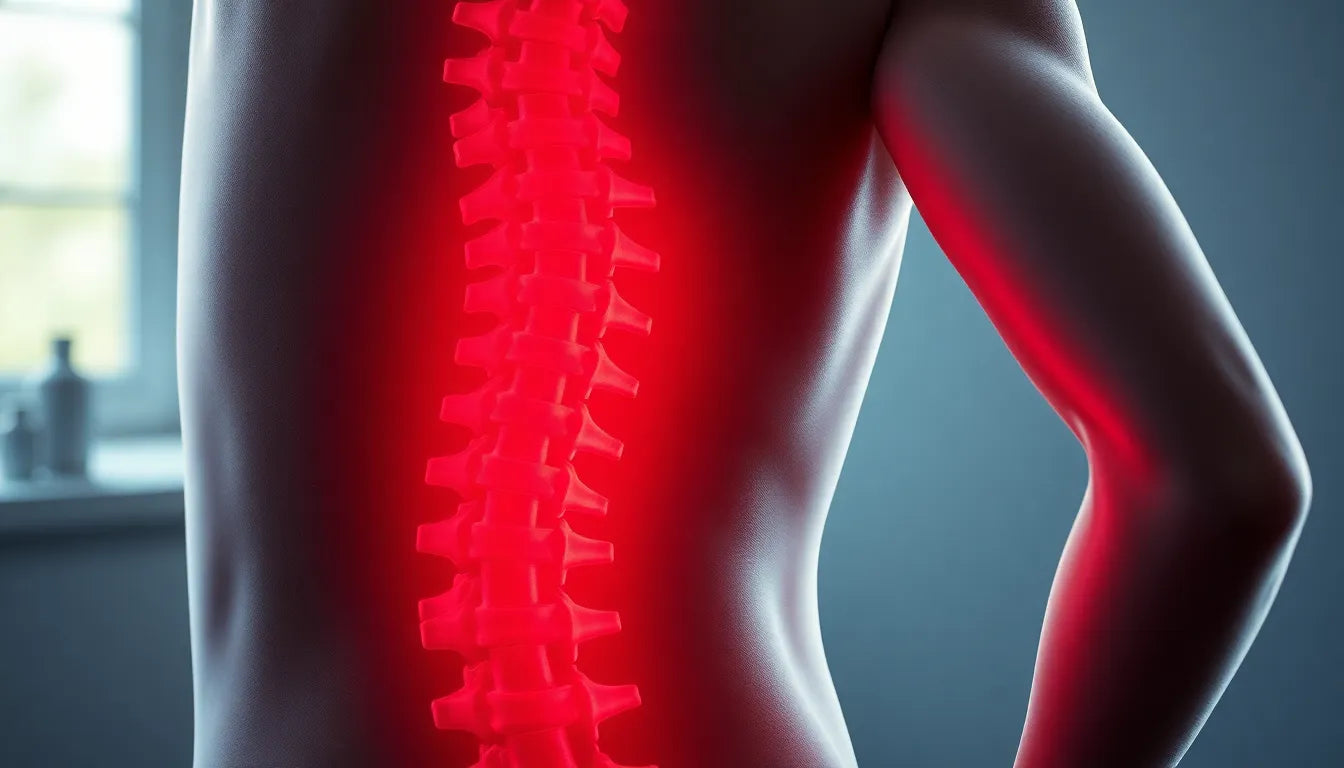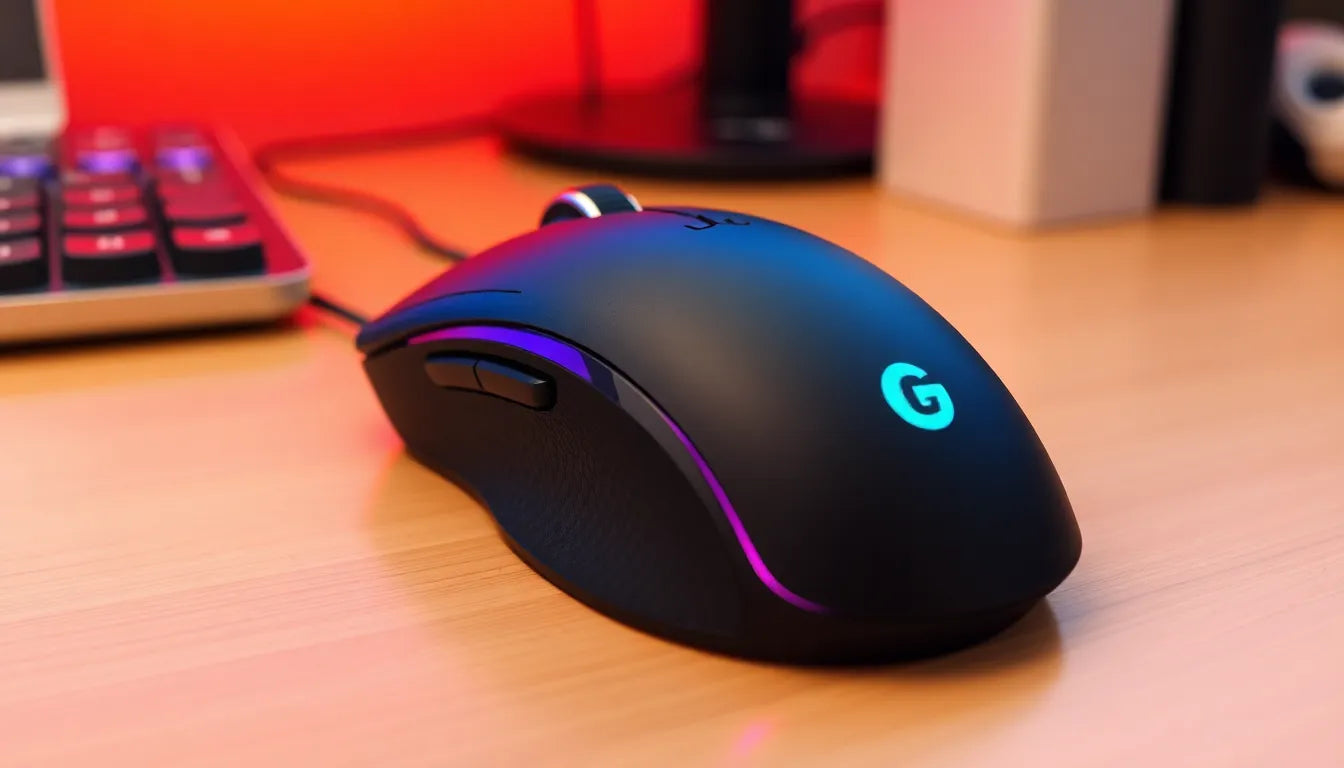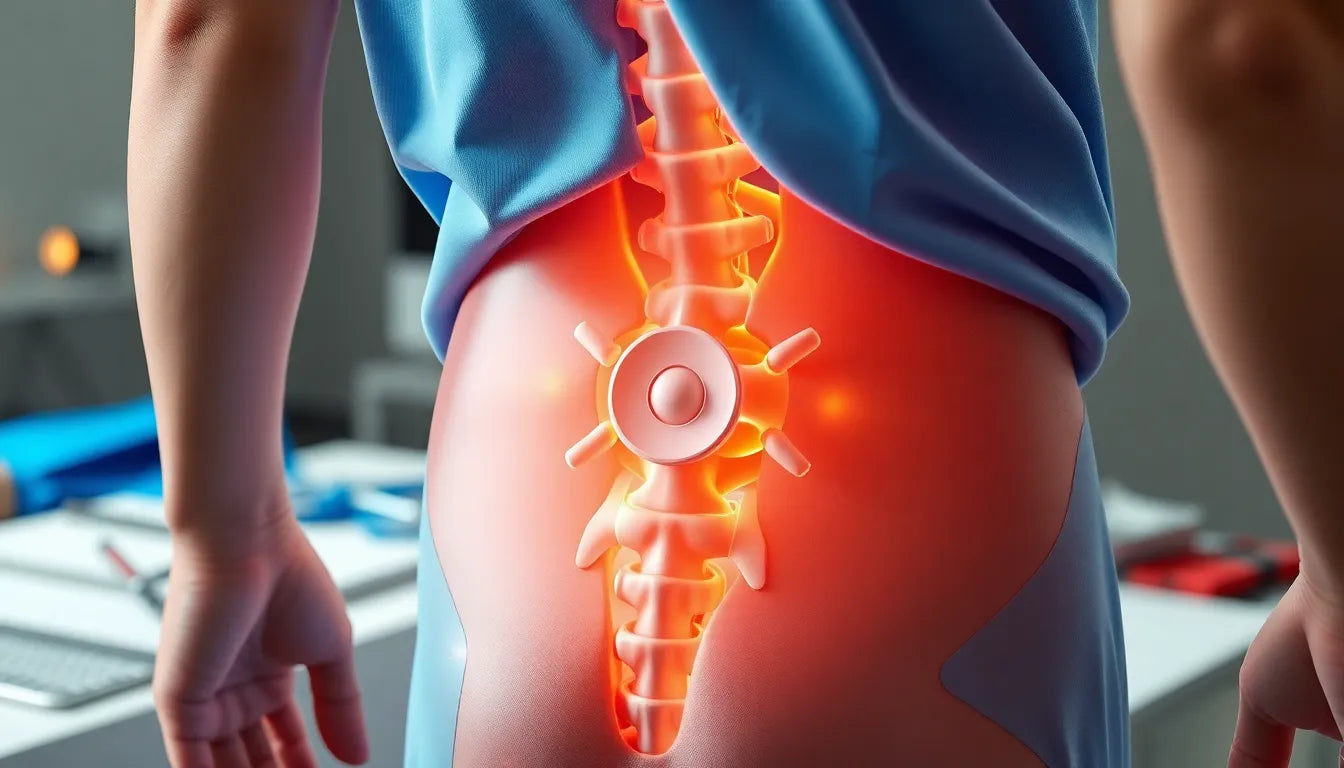A herniated disc, often referred to as a slipped or ruptured disc, occurs when the soft inner gel of a spinal disc pushes through a crack in the tougher exterior casing. This condition can significantly disrupt daily life, as it often brings with it a host of uncomfortable symptoms. Many individuals experience persistent back pain, tingling sensations, and numbness that can extend to the arms or legs, depending on the location of the herniation. These symptoms not only cause physical discomfort but can also make simple tasks, such as sitting or walking, a challenge.
understanding herniated discs
For those dealing with a herniated disc, understanding the condition is the first step towards effective management. The spine is made up of a series of vertebrae cushioned by discs that absorb shock and allow for flexibility. When a disc herniates, it can press on nearby nerves, leading to pain and other symptoms. The severity of these symptoms can vary widely, from mild discomfort to debilitating pain that interferes with everyday activities. It is crucial to address herniated disc pain promptly, as ignoring it can lead to further complications, such as chronic pain or nerve damage.
the goal of pain relief
Managing herniated disc pain involves a strategic approach that combines medical advice with lifestyle adjustments. The primary goal is to alleviate pain and improve quality of life both in the short term and over the long haul. Immediate relief can often be achieved through medication and specific therapies, while long-term management focuses on lifestyle changes that support spinal health. This dual approach not only addresses the current discomfort but also works to prevent future issues, ensuring that individuals can continue to engage in their daily activities with minimal disruption.
Through a combination of medical interventions and thoughtful lifestyle modifications, individuals can find effective ways to relieve the pain associated with a herniated disc. By taking proactive steps to manage symptoms and support spinal health, it is possible to regain control over one's life and reduce the impact of this common spinal condition.
conventional medical advice for herniated disc relief
When dealing with a herniated disc, conventional medical advice often serves as the foundation for effective pain management. A critical component of this approach is rest and physical therapy. While it might seem counterintuitive, experts like those at the Cleveland Clinic advise against prolonged bed rest, as it can lead to muscle stiffness and worsen symptoms. Instead, short periods of rest are recommended, allowing the body to recover without compromising mobility. Physical therapy plays a pivotal role in this recovery process. Guided by medical professionals, patients engage in stretching exercises that improve flexibility, strengthen the muscles supporting the spine, and reduce pressure on the affected disc.
Another cornerstone of conventional treatment is pain management strategies. Over-the-counter pain medications, such as non-steroidal anti-inflammatory drugs (NSAIDs), are commonly used to alleviate inflammation and discomfort. For more severe pain, doctors may prescribe stronger medications or muscle relaxants. Additionally, topical pain relievers, which can be applied directly to the skin over the painful area, offer localized relief by numbing the nerves and reducing inflammation. These strategies, as highlighted by Spine-health, provide a multifaceted approach to managing the discomfort associated with herniated discs.
home remedies and alternative therapies
Beyond conventional treatments, many individuals find relief through home remedies and alternative therapies. One popular method is heat and cold therapy. Applying heat before physical activities can help relax muscles and increase blood flow, making movement easier and less painful. Conversely, cold therapy is beneficial after activities, as it helps reduce inflammation and numb the area, providing a soothing effect. Alternating between hot and cold applications can be particularly effective in managing inflammation and pain, as noted by experts from Sciatica.com.
In addition to these therapies, innovative methods like the McKenzie method offer promising results. This approach involves specific exercises designed to centralize pain, moving it away from the extremities and back towards the spine, which can alleviate discomfort and improve function. Similarly, non-surgical spinal decompression, a technique highlighted by Texas Spine & Sports Therapy, has gained attention for its ability to gently stretch the spine, reducing pressure on herniated discs and facilitating healing. These alternative therapies provide additional options for those seeking to relieve herniated disc pain without surgical intervention.
By combining conventional medical advice with home remedies and alternative therapies, individuals can create a comprehensive plan to manage herniated disc pain effectively. This multifaceted approach not only addresses immediate symptoms but also supports long-term recovery and spinal health. As always, it's essential to consult with healthcare professionals before starting any new treatment regimen to ensure safety and efficacy.
ergonomic and lifestyle adjustments for herniated disc relief
When managing herniated disc pain, ergonomic and lifestyle adjustments can play a crucial role in alleviating discomfort and promoting long-term spinal health. Implementing these changes can significantly reduce the strain on your spine, making daily activities more manageable and less painful.
ergonomic solutions
Investing in ergonomic furniture and accessories is a practical step towards reducing pressure on the spine. Ergonomic chairs, desks, and keyboard setups are designed to support proper posture, which is essential for minimizing stress on the back. When setting up an ergonomic workspace, ensure that your chair supports the natural curve of your spine, your feet are flat on the floor, and your computer screen is at eye level. These adjustments can help maintain spinal alignment and prevent further aggravation of a herniated disc.
lifestyle changes
In addition to ergonomic solutions, certain lifestyle changes can further support recovery and prevent future disc issues. Proper posture is key; whether sitting, standing, or walking, maintaining a neutral spine can reduce unnecessary strain. When lifting objects, use your legs instead of your back and keep the object close to your body to avoid undue stress on the spine.
Regular, low-impact exercises such as swimming, walking, or cycling can strengthen core muscles, which in turn support the spine and help prevent further injury. These activities also promote flexibility and improve overall physical health, contributing to a more resilient body capable of handling daily tasks with ease.
prevention and long-term management
Preventing future herniated discs involves a commitment to maintaining a healthy lifestyle and integrating ergonomic solutions into everyday routines. Regular exercise, a balanced diet, and maintaining a healthy weight are fundamental components of spinal health. These practices not only help prevent herniated discs but also enhance overall well-being.
Incorporating ergonomic solutions at home and work can provide sustained relief and prevent the recurrence of disc-related pain. By creating an environment that supports proper posture and reduces strain, individuals can enjoy a more comfortable and productive daily life.
Frequently Asked Questions
What are the most effective exercises for herniated disc pain relief?
Exercises such as gentle stretching, walking, swimming, and cycling are effective for herniated disc pain relief. These low-impact activities help strengthen core muscles, improve flexibility, and support spinal health. Always consult with a healthcare professional before starting any exercise regimen.
How long does it take to recover from a herniated disc?
Recovery time from a herniated disc varies depending on the severity of the condition and individual health factors. Generally, with appropriate treatment and lifestyle adjustments, most people experience significant improvement within six weeks to three months.
Can ergonomic aids really help with herniated disc pain?
Yes, ergonomic aids can significantly help with herniated disc pain. By promoting proper posture and reducing strain on the spine, ergonomic furniture and accessories can alleviate discomfort and support recovery. They also play a critical role in preventing future injuries.
Is surgery always necessary for a herniated disc?
Surgery is not always necessary for a herniated disc. Many individuals find relief through non-surgical treatments such as physical therapy, medication, and lifestyle adjustments. Surgery is typically considered when conservative treatments fail to alleviate severe symptoms or when there is significant nerve damage.
Sources
- Mayo Clinic. "Herniated Disk: Diagnosis and Treatment."
- Spine-health. "5 Little-Known Tips for Lumbar Herniated Disc Pain Relief."
- Cleveland Clinic. "Herniated Disk (Bulging Disk): Symptoms & Treatment."
- Sciatica.com. "11 Treatment Options for Herniated Discs."
- Spine-nj. "Alleviate Herniated Disc Pain: 4 Best Tips."
- Spine-health. "Treatment for a Lumbar Herniated Disc."
- Texas Spine & Sports Therapy. "6 Powerful Methods for Treating Your Herniated Disc."



